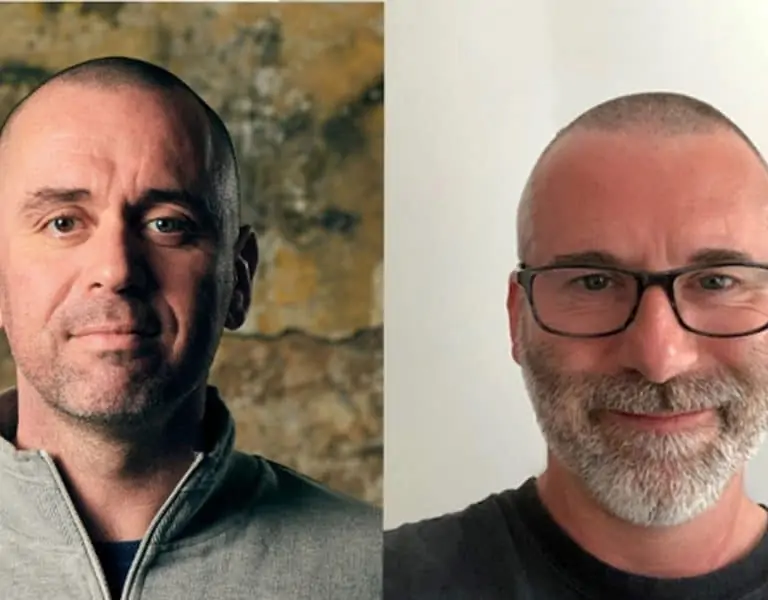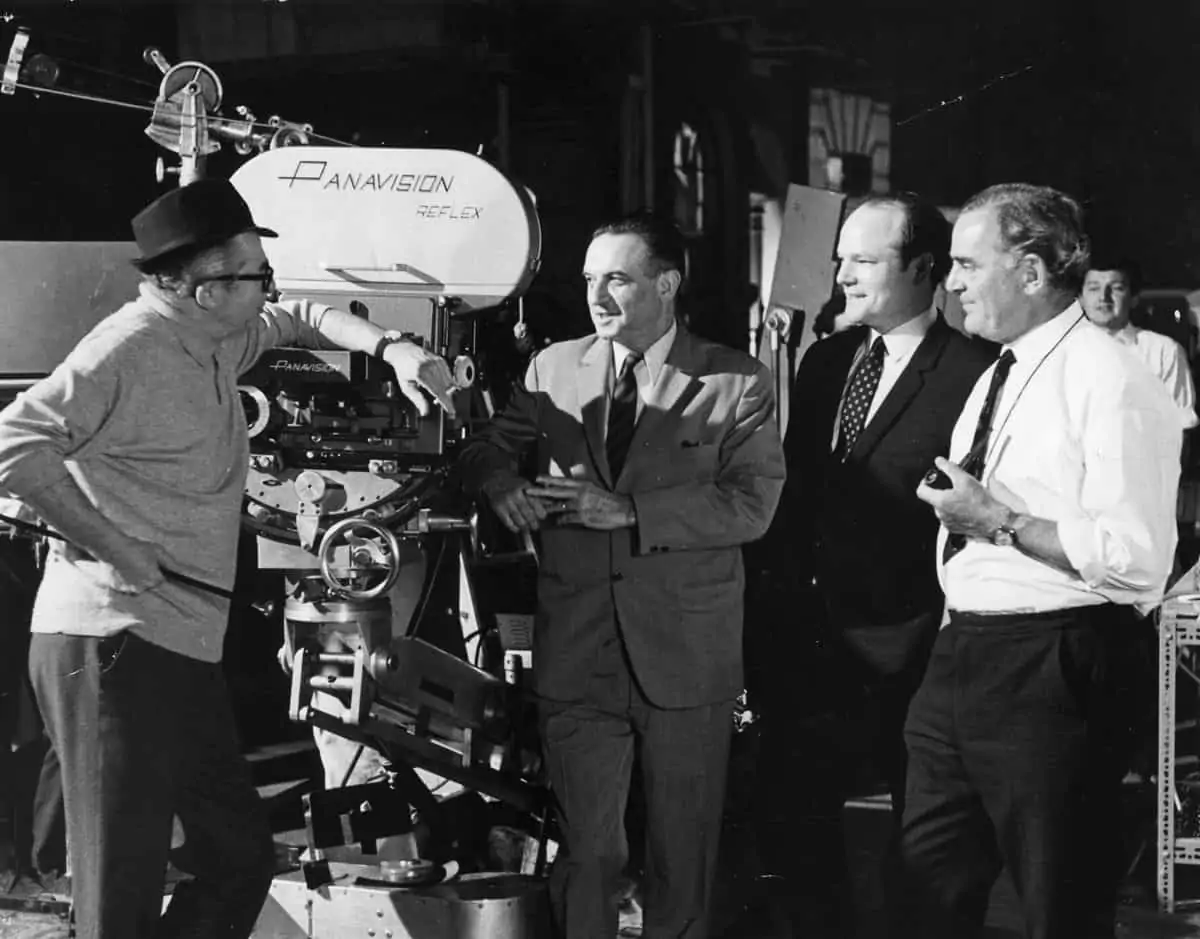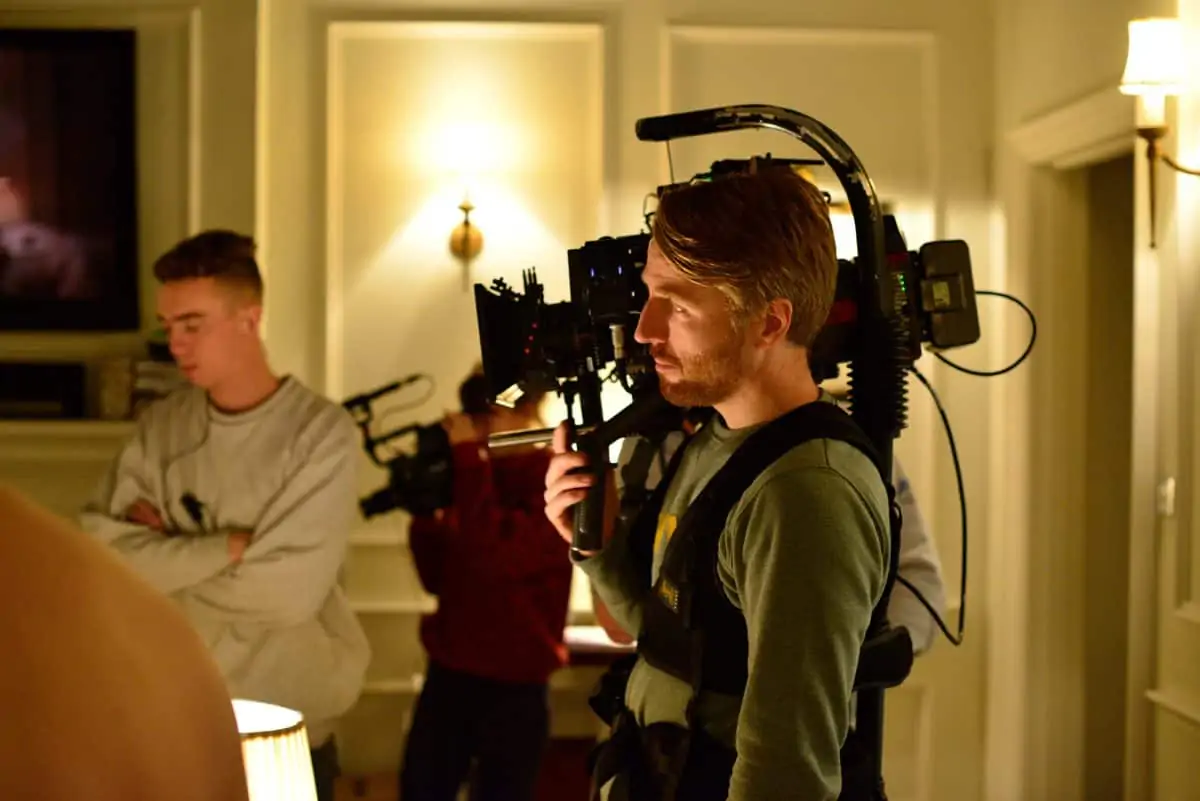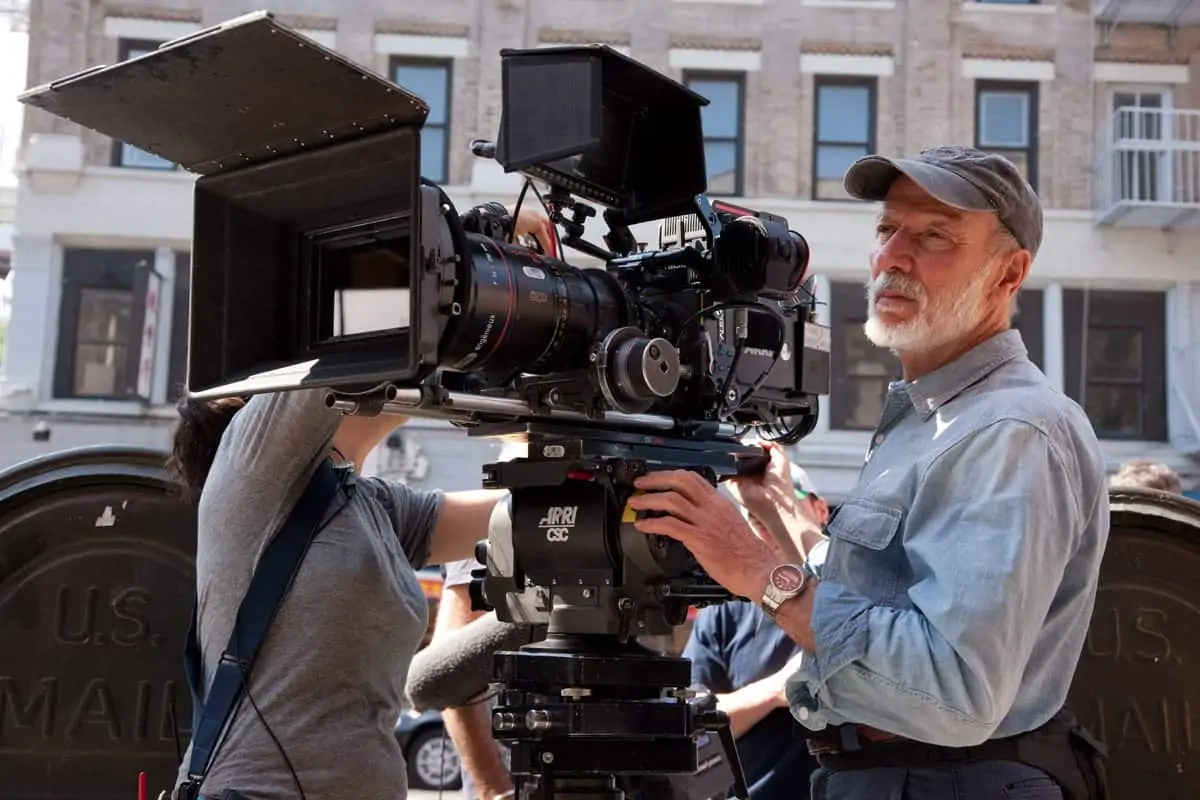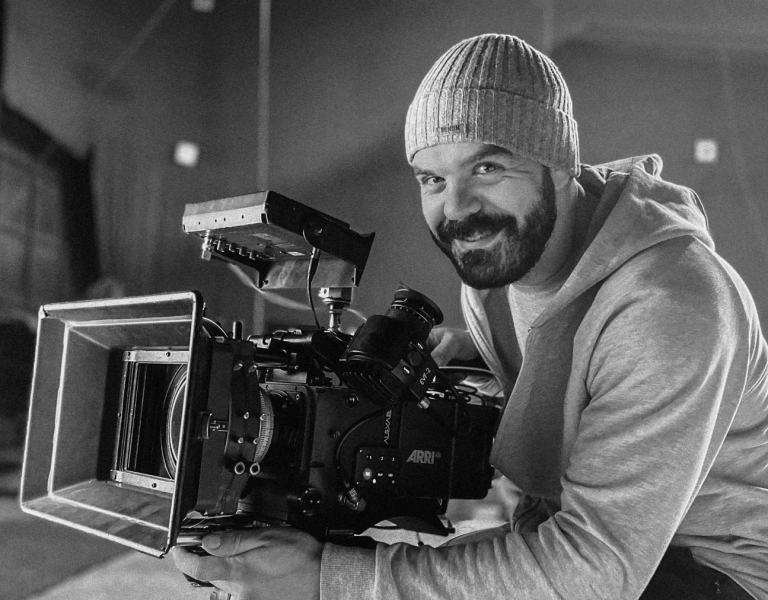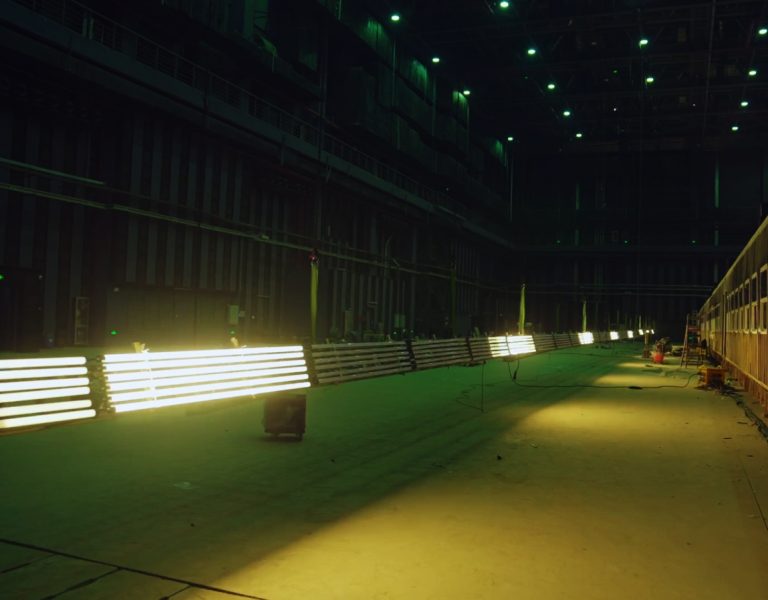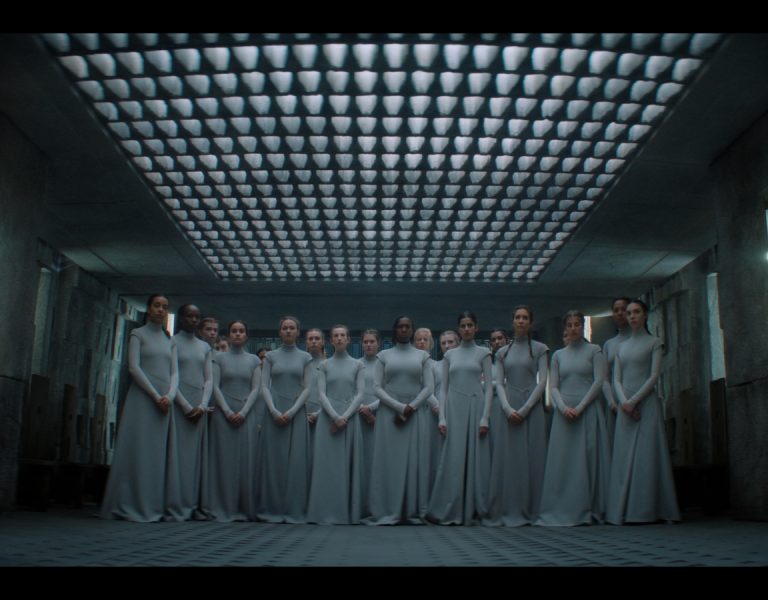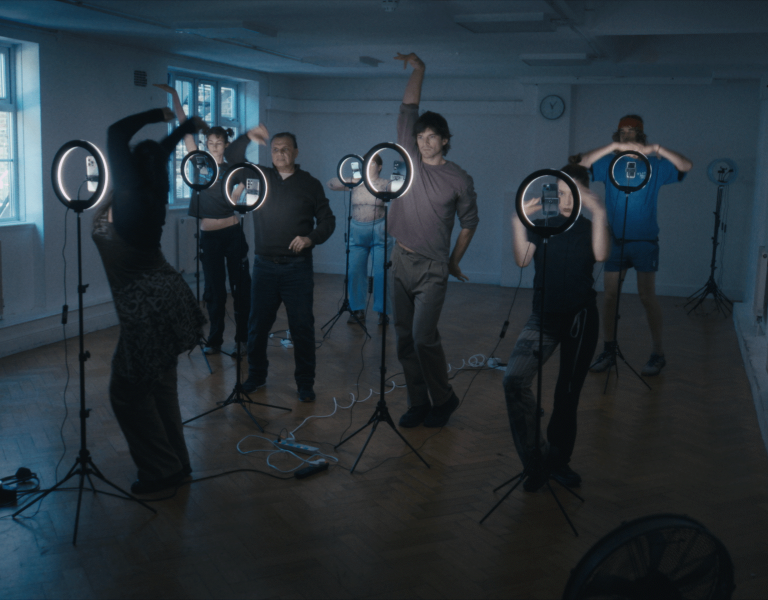UPWARD MOBILITY
Innovation is often driven by a single idea or preoccupation. For Chris Fawcett it is ergonomics and, more specifically, human movement.
This makes sense for someone who specialises in Steadicam shooting but Fawcett has used his experience as an operator and early training in architectural engineering to design devices and systems for enhancing the performance and usability of the camera support mechanism.
This has led to the development of the Steadiseg, a Segway controlled by the rider’s legs, leaving the hands free to manipulate a Steadicam rig; the Exovest, an upgraded version of the original Steadicam body harness; and, most recently, the Zeen, a wheelchair-style ‘vehicle’ that promises to be the first in a range of ergonomic ‘furniture’ with applications not confined to filmmaking.
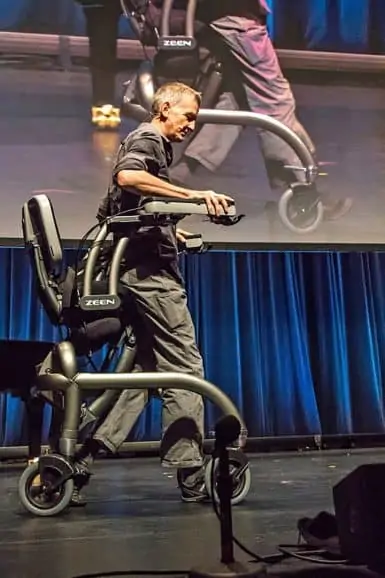
Chris Fawcett demo’s the Zeen 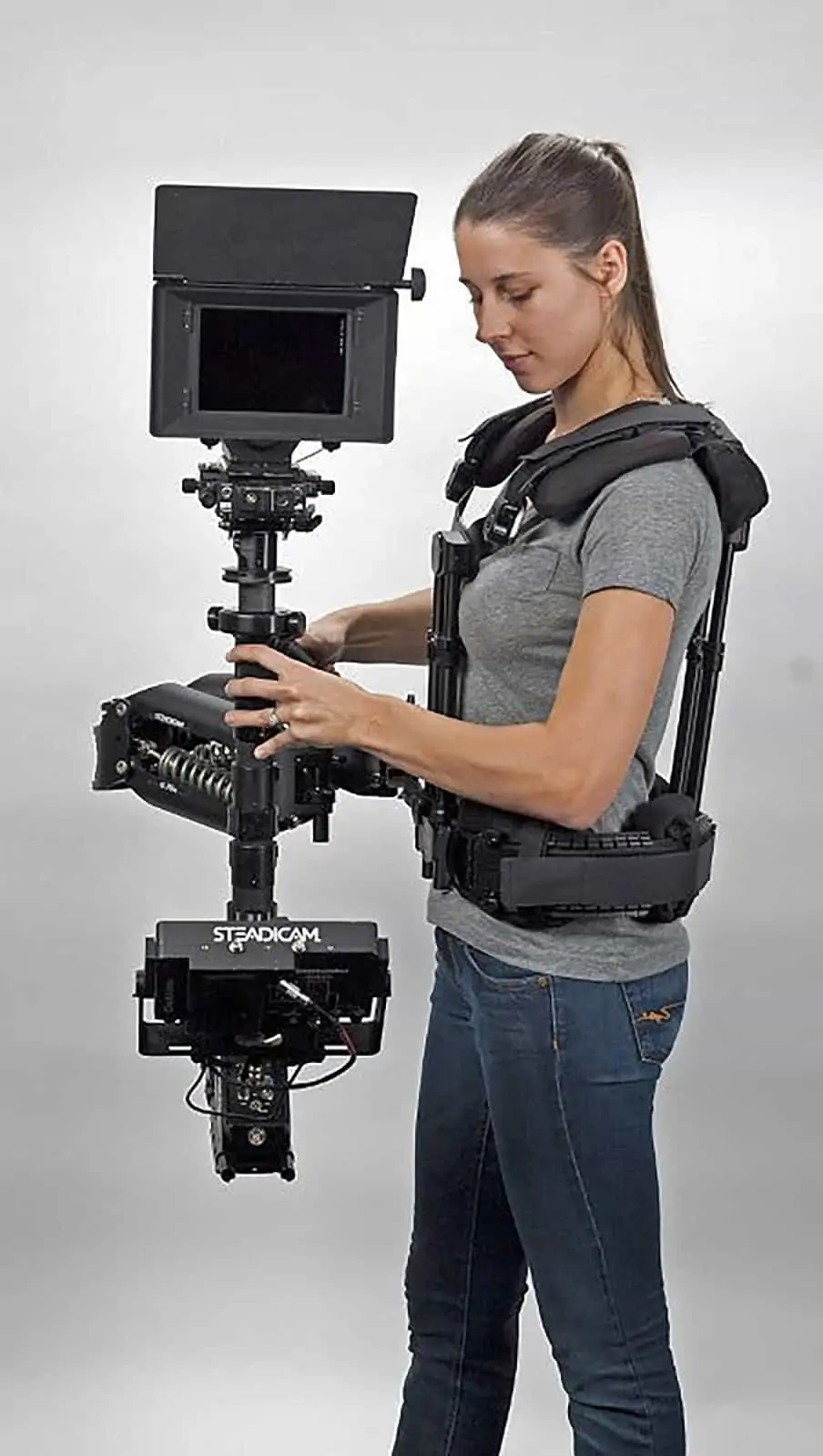
Steadicam operator Katy Most in Exovest
Born in Portrush, Northern Ireland, Fawcett studied at the Oxford School of Architecture. He went on to work for a firm of consulting engineers, concentrating on the human factors involved in engineering, but decided office life was not for him. “It didn’t suit me, I like to get my hands on things, getting into something physically and moving it around,” he says. “I was also interested in zero-energy housing, but it was early days for that and not a lot was going on.”
The need to do something more tactile saw Fawcett working as a saxophonist, opera singer and circus performer, before joining the BBC in Belfast during the early 1990s. Initially a sound recordist, he moved to the camera department and at the start of the 2000s began working on travel and mountaineering documentaries. “I had always been into photography and had a Leica camera,” he explains. Then, in 2004, Fawcett was “introduced” to the technology that would become the dominant factor in his career. “Steadicam was the combination of the technical, the physical and the creative I had been looking for,” he comments, “and after that I just put down the music.”
Fawcett says the Steadicam appealed to his “passion for the aesthetics of camera movement”, although he is not a fan of continuous takes or movement for their own sake. “I like long shots when they work,” he says of sequences such as the opening of Orson Welles’ Touch of Evil (1958 DP Russell Metty ASC) and scenes in Carlito’s Way (1993 DP Stephen H Burum ASC), “but not when they’re gratuitous.” He cites Bonfire of the Vanities (1990 DP Vilmos Zsigmond ASC), directed, like Carlito’s Way, by Brian De Palma, as an example of where movement does not work as well.
The traditional vest made the wearer use extra muscles they shouldn’t have been using, which was tiring and wasted effort. The Exovest is an adaptation that enables the operator to walk naturally in a straight line.
Chris Fawcett
Immersing himself in the Steadicam, Fawcett teaches and lectures on its use, as well as filming, particularly with short film and documentary director Ben Russell. But the more he worked with rigs, the more he became frustrated by the tools available. This resulted in him designing his own to improve mobility and functionality, starting with the Steadiseg. “That was the first device to which I applied my thoughts about compromising how we move as little as possible and getting close to human movement,” he comments.
The Steadiseg was produced in collaboration with Ulrich Kahlert, inventor of the hands-free steering system for the Segway personal transporter. “Ulrich is a fantastic engineer and machinist,” Fawcett says. “He’s an innovator and can fabricate things on the spot.” The two met at a seminar organised by the Tiffen Company, which owns Steadicam. It was also through Tiffen that Fawcett was introduced to the creator of the Steadicam, Garrett Brown.
Fawcett feels Brown’s design was “perfect” but had been improved by upgrades including the M2 sled base and G Series arm. “Operators had got everything they wanted over the last 15 years,” Fawcett says, “but I and others had been lobbying for an update to the vest. The vest is critical but the original interfered with natural functions such as respiration and perspiration – it got very sweaty. It also affected the way you walk.”
Brown was aware of this and, after reading an article about Steadicam Posture written by Fawcett, decided he was the person to handle the redesign. Fawcett came up with the Exovest, a lightweight, semi-rigid skeletal harness designed to give any operator more comfort and manoeuvrability. “The traditional vest made the wearer use extra muscles they shouldn’t have been using, which was tiring and wasted effort,” Fawcett explains. “The Exovest is an adaptation that enables the operator to walk naturally in a straight line.”
Manufacture of the Exovest was given to Tiffen but for their next collaboration, Fawcett and Brown formed their own company, Exokinetics, and recruited a team of designers, engineers and fabricators to look at ways of dealing with lessened mobility in general. Their work comes under the Zeen Project, with the aim of producing a range of active furniture. The first fruit of this is the Zeen, which looks like a wheelchair, only without the familiar two big wheels and two small wheels configuration.
The Zeen does have potential in filmmaking, with the historical precedent of the specially modified wheelchair used on Stanley Kubrick’s A Clockwork Orange (1971 DP John Alcott BSC) for smooth, low-angle tracking shots. But it is capable of being more than a mobile chair; it can be set up to offer support to an infirm or disabled person when standing or engaging in more active pursuits, such as dancing. This expansion beyond the film business has already happened with the Exovest, which is used for large tool support by both Boeing and the US Navy. Zeen is now in the prototype and testing phases of development, with release scheduled for 2021. Chris Fawcett, who prefers to move on to new practical design and leave the final stages to others, is now looking at the next project. “It may not necessarily have anything to do with Steadicam,” he concludes. “It’s all about improving human mobility, making it natural and pleasurable. And this is the bit I like, building something on spec with whatever is to hand.”
